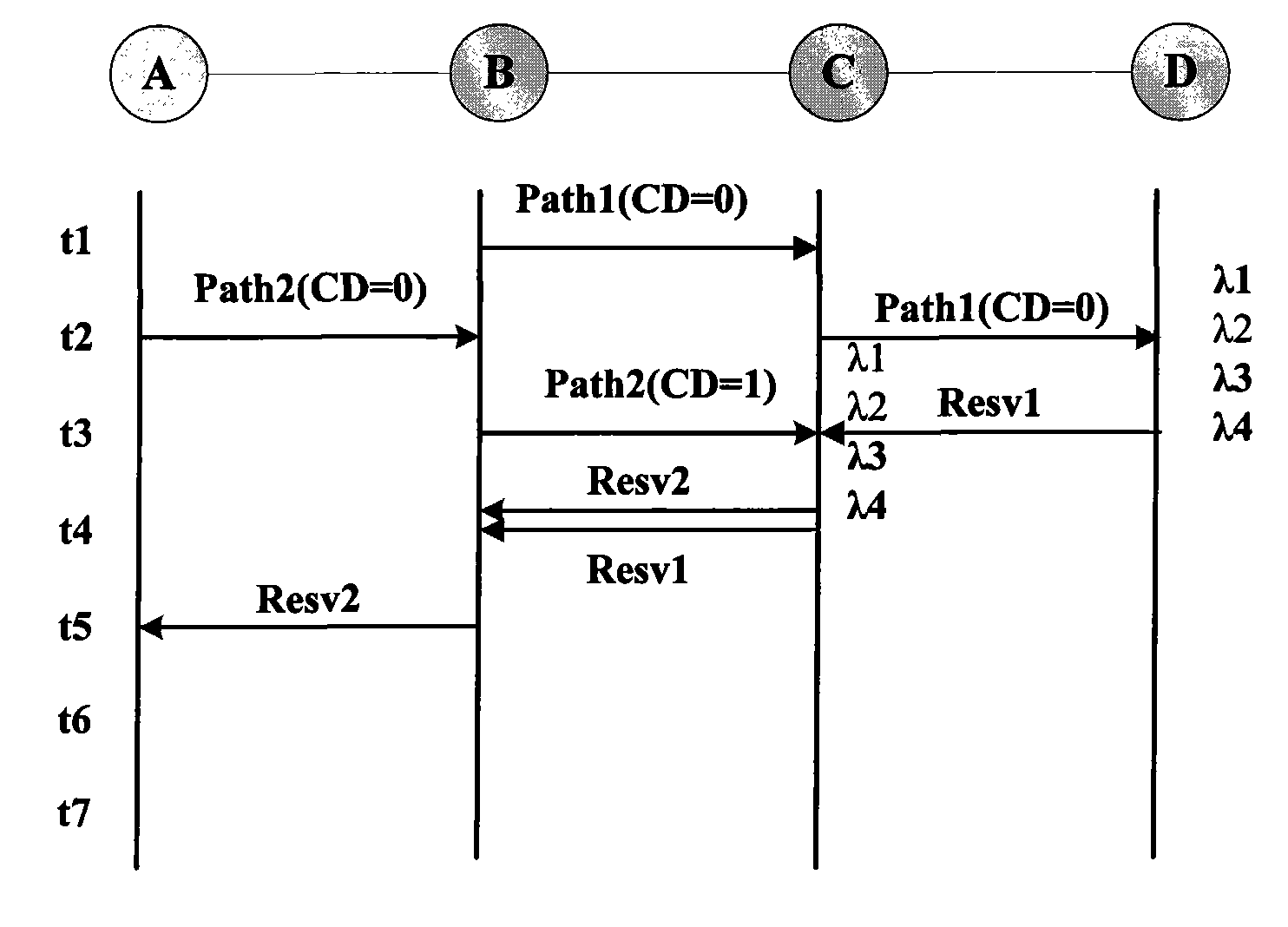Adaptive wavelength adjustment mechanism applied to network construction
A wavelength adjustment and adaptive technology, applied in the field of communication, can solve the problems of reducing the network blocking rate, reducing the probability of network backward resource conflict, distributed network conflict, etc., to solve resource conflicts, reduce the probability of backward resource conflicts, reduce The effect of blocking rate
- Summary
- Abstract
- Description
- Claims
- Application Information
AI Technical Summary
Problems solved by technology
Method used
Image
Examples
Embodiment Construction
[0026] Such as figure 1 As shown, the 8-bit Reserved field in the RSVP Common Header defined by RFC2205 is not used. The present invention extends the Reserved field, and selects 1 bit of it as the CD field. And it is stipulated that when CD is 0, there is no potential resource conflict; when CD is 1, there is potential resource conflict.
[0027] refer to figure 2 As shown, there are nodes A, B, C, and D in the network. The available wavelengths between any two links in the entire network are λ1, λ2, λ3 and λ4. At time t1, node B starts to establish a service to node D, assuming that the routing result is B->C->D. Node B first queries its own PSB / RSB database and finds that it is empty, so it sets the CD bit to 0. After the PATH1 message is sent to node C via node B, node B writes the PSB information to node C in its empty PSB / RSB database.
[0028] At t2, node C receives the PATH 1 message, first reads the CD flag, and finds it is 0, so node C queries its own PSB / RSB ...
PUM
 Login to View More
Login to View More Abstract
Description
Claims
Application Information
 Login to View More
Login to View More - R&D
- Intellectual Property
- Life Sciences
- Materials
- Tech Scout
- Unparalleled Data Quality
- Higher Quality Content
- 60% Fewer Hallucinations
Browse by: Latest US Patents, China's latest patents, Technical Efficacy Thesaurus, Application Domain, Technology Topic, Popular Technical Reports.
© 2025 PatSnap. All rights reserved.Legal|Privacy policy|Modern Slavery Act Transparency Statement|Sitemap|About US| Contact US: help@patsnap.com



